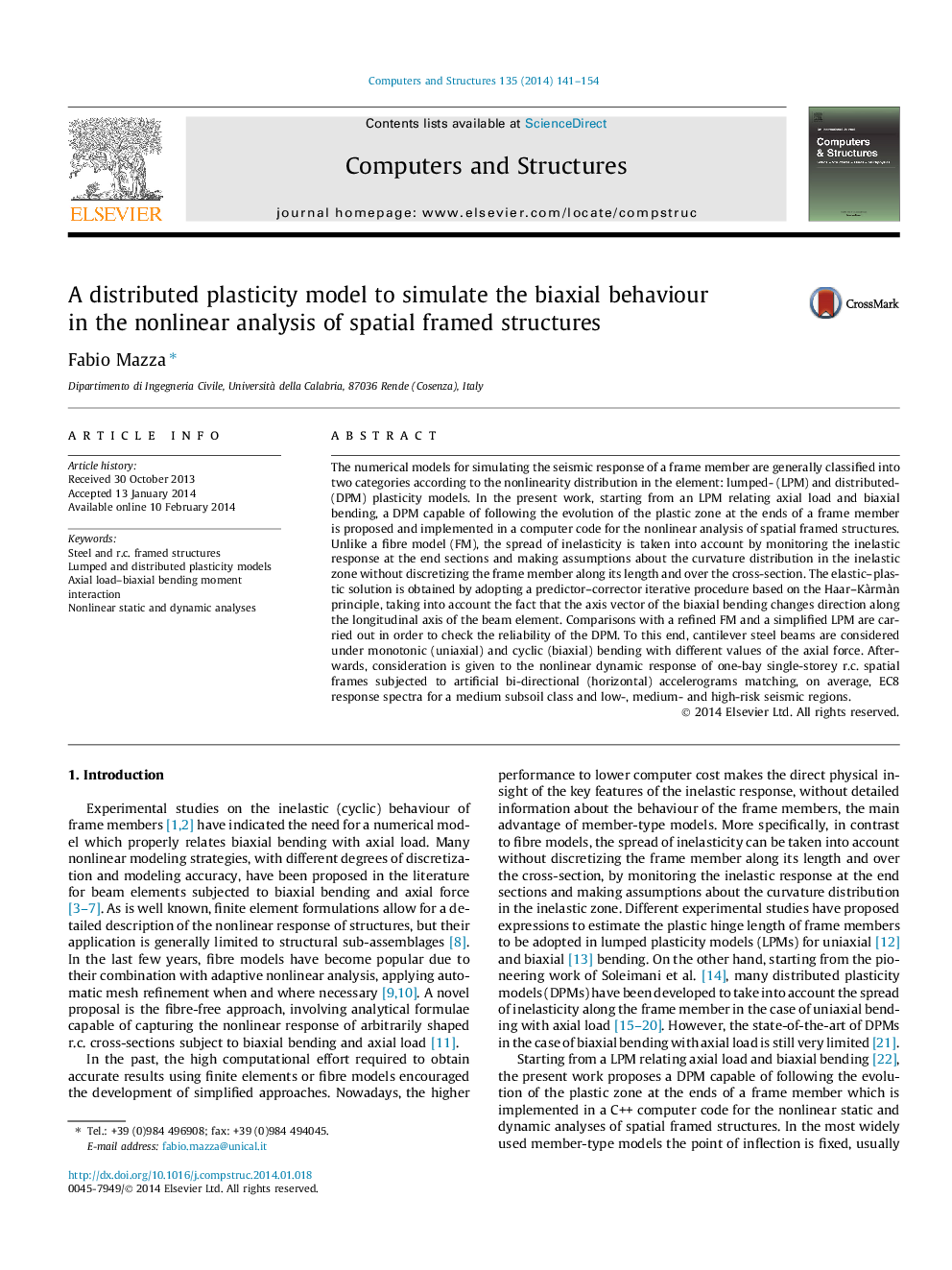| Article ID | Journal | Published Year | Pages | File Type |
|---|---|---|---|---|
| 509797 | Computers & Structures | 2014 | 14 Pages |
•A distributed plastic model (DPM) is proposed for axial load and biaxial bending.•A computer code is prepared for nonlinear static and dynamic analysis of 3D frames.•Comparisons with a lumped plasticity model (LPM) and a refined fibre model (FM).•Cantilever steel beams subjected to monotonic (uniaxial) and cyclic (biaxial) bending.•One-bay single-storey r.c. spatial frames subjected to bi-directional accelerograms.
The numerical models for simulating the seismic response of a frame member are generally classified into two categories according to the nonlinearity distribution in the element: lumped- (LPM) and distributed- (DPM) plasticity models. In the present work, starting from an LPM relating axial load and biaxial bending, a DPM capable of following the evolution of the plastic zone at the ends of a frame member is proposed and implemented in a computer code for the nonlinear analysis of spatial framed structures. Unlike a fibre model (FM), the spread of inelasticity is taken into account by monitoring the inelastic response at the end sections and making assumptions about the curvature distribution in the inelastic zone without discretizing the frame member along its length and over the cross-section. The elastic–plastic solution is obtained by adopting a predictor–corrector iterative procedure based on the Haar–Kàrmàn principle, taking into account the fact that the axis vector of the biaxial bending changes direction along the longitudinal axis of the beam element. Comparisons with a refined FM and a simplified LPM are carried out in order to check the reliability of the DPM. To this end, cantilever steel beams are considered under monotonic (uniaxial) and cyclic (biaxial) bending with different values of the axial force. Afterwards, consideration is given to the nonlinear dynamic response of one-bay single-storey r.c. spatial frames subjected to artificial bi-directional (horizontal) accelerograms matching, on average, EC8 response spectra for a medium subsoil class and low-, medium- and high-risk seismic regions.
